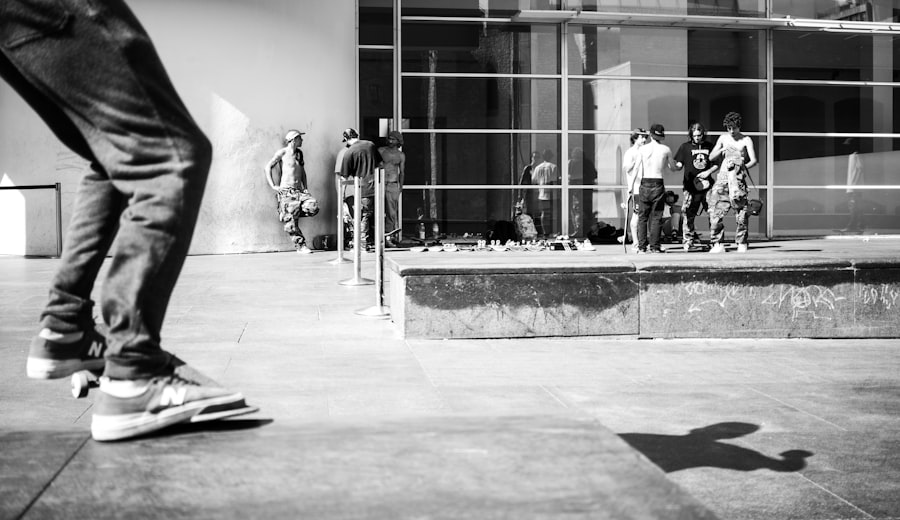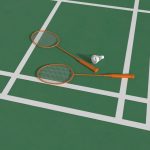The Ultimate Guide to Mastering Table Tennis
Description
Table tennis, often referred to as ping pong, is a fast-paced sport that combines agility, precision, and strategic thinking. Originating in England during the late 19th century as a parlor game, it has evolved into a highly competitive sport played worldwide. The game is played on a rectangular table divided by a net, with players using small paddles to hit a lightweight ball back and forth.
The objective is to score points by making the ball land on the opponent’s side of the table in such a way that they cannot return it. Understanding the fundamental rules and scoring system is essential for anyone looking to engage in this dynamic sport. The game can be played in singles or doubles formats, with each player or team taking turns to serve.
A match is typically played to 11 points, and players must win by at least a two-point margin. The rules governing serves, rallies, and scoring are designed to ensure fair play and maintain the game’s fast pace.
Familiarity with these basics lays the groundwork for developing more advanced skills and strategies in table tennis.
Key Takeaways
- Table tennis requires quick reflexes and hand-eye coordination
- The correct grip and stance are essential for control and power in table tennis
- Mastering the serve and return is crucial for gaining an advantage in a match
- Consistent footwork and movement are key to reaching the ball and maintaining balance
- Improving forehand and backhand techniques is essential for a well-rounded game
Mastering the Grip and Stance
The grip and stance are foundational elements that significantly influence a player’s performance in table tennis. There are primarily two types of grips: the shakehand grip and the penhold grip. The shakehand grip resembles a handshake and is favored by many players for its versatility, allowing for both forehand and backhand strokes with ease.
In contrast, the penhold grip, which involves holding the paddle like a pen, offers greater control for close-to-the-table play but may limit backhand options. Each grip has its advantages and disadvantages, and players should experiment to find which one feels most comfortable and effective for their style of play. Equally important is the stance a player adopts while playing.
A balanced stance allows for quick movements and effective shot execution. Players should position their feet shoulder-width apart, with knees slightly bent to maintain a low center of gravity. This posture not only enhances stability but also facilitates rapid lateral movements essential for reaching balls hit to different areas of the table.
Additionally, players should keep their weight slightly forward on the balls of their feet, ready to spring into action. Mastering both grip and stance is crucial for developing a solid foundation in table tennis, enabling players to execute shots with precision and power.
Perfecting the Serve and Return

The serve is one of the most critical aspects of table tennis, as it sets the tone for each rally. A well-executed serve can put an opponent on the defensive right from the start. There are various types of serves, including topspin, backspin, sidespin, and no-spin serves, each designed to create different challenges for the receiver.
For instance, a topspin serve can make the ball bounce higher, while a backspin serve can cause it to stay low and skid off the table. Players should practice these different serves to develop a repertoire that keeps opponents guessing. Equally important is mastering the return of serve.
A successful return can neutralize an opponent’s advantage gained from their serve. Players should focus on reading the spin and speed of the incoming ball to determine the best way to respond. For example, when facing a topspin serve, players might choose to counter with their own topspin shot or a well-timed block.
Developing a keen sense of anticipation and reaction time is essential for effective returns. Practicing serves and returns in tandem allows players to create a seamless flow in their game, enhancing their overall performance.
Developing Consistent Footwork and Movement
| Player | Matches Played | Distance Covered (in meters) | Average Speed (in km/h) |
|---|---|---|---|
| Player 1 | 20 | 5000 | 7.5 |
| Player 2 | 25 | 6000 | 8.2 |
| Player 3 | 18 | 4800 | 7.0 |
Footwork is often an overlooked aspect of table tennis training, yet it plays a pivotal role in a player’s ability to execute shots effectively. Good footwork enables players to position themselves optimally for each shot, ensuring they can generate power and control. Players should focus on developing quick lateral movements as well as forward and backward steps to reach balls hit at various angles.
Drills that emphasize agility and speed can help improve footwork; for instance, ladder drills or cone exercises can enhance quickness and coordination. In addition to agility, players must also learn how to move efficiently around the table. This involves understanding when to take small steps for precise positioning versus larger strides for covering greater distances.
A common mistake among beginners is overcommitting to shots, which can lead to poor positioning for subsequent returns. By practicing footwork patterns during drills and incorporating movement into rally scenarios, players can develop muscle memory that translates into improved performance during matches.
Improving Your Forehand and Backhand Techniques
The forehand and backhand strokes are fundamental components of table tennis that require dedicated practice to master. The forehand stroke is typically more powerful due to the body’s natural mechanics; players can generate significant speed and spin by utilizing their whole body in the shot. Key elements include proper timing, body rotation, and follow-through.
Players should focus on hitting through the ball rather than just tapping it, as this generates more force and spin. On the other hand, the backhand stroke often requires more finesse and precision. Many players struggle with this shot due to its perceived complexity; however, with practice, it can become a reliable weapon in one’s arsenal.
Players should also practice variations of the backhand stroke, such as the backhand push or flick, which can be useful in different match situations. Regularly incorporating both forehand and backhand drills into training sessions will lead to improved consistency and effectiveness during gameplay.
Mastering Spin and Control

Spin is one of the most intriguing aspects of table tennis that adds complexity to gameplay. Understanding how to generate spin on shots can give players a significant advantage over their opponents. Topspin is created by brushing up on the ball during contact, causing it to dip quickly after crossing the net; this makes it difficult for opponents to return effectively.
Conversely, backspin is produced by brushing down on the ball, causing it to float low over the net and potentially disrupt an opponent’s timing. Control over spin also extends to receiving serves; players must learn how to read an opponent’s spin and adjust their own strokes accordingly. For instance, when facing a heavy topspin shot, players might need to angle their paddle slightly upward to counteract the ball’s trajectory effectively.
Practicing against various spins during training sessions can help players develop this critical skill set. Additionally, understanding how different types of rubber on paddles interact with spin can further enhance a player’s ability to control their shots.
Advanced Strategies and Tactics for Competitive Play
As players progress in their table tennis journey, developing advanced strategies becomes essential for success in competitive play. One key strategy involves understanding one’s own strengths and weaknesses as well as those of opponents. For example, if a player excels at generating topspin but struggles with backspin returns, they might focus on exploiting opponents who rely heavily on backspin serves or shots.
Another important tactical consideration is shot placement. Players should aim not only for power but also for precision in placing shots where opponents are least prepared to respond. This could involve targeting corners of the table or exploiting gaps in an opponent’s defense created by their positioning.
Additionally, varying shot speed and spin can disrupt an opponent’s rhythm, making it difficult for them to anticipate subsequent shots. Incorporating these advanced strategies into practice matches will help players refine their tactical acumen.
Mental and Physical Training for Peak Performance
Table tennis is not just a physical game; mental fortitude plays an equally crucial role in achieving peak performance. Players must cultivate focus, resilience, and strategic thinking under pressure. Mental training techniques such as visualization can be beneficial; imagining successful rallies or match scenarios helps build confidence and prepares players for real competition situations.
Physical conditioning is also vital for maintaining stamina throughout matches. Endurance training through cardiovascular exercises like running or cycling can enhance overall fitness levels, while strength training focusing on core stability will improve shot power and balance during play. Flexibility exercises are equally important; they help prevent injuries while allowing players to reach difficult shots more easily.
By integrating both mental and physical training into their routines, players can elevate their game and perform at their best when it matters most.
If you’re a fan of Table Tennis, you may also be interested in learning about the popular mobile game Super Mario Run. This game combines the classic Mario gameplay with new features designed for mobile devices. You can read more about it here.
FAQs
What is table tennis?
Table tennis, also known as ping-pong, is a sport in which two or four players hit a lightweight ball back and forth across a table using small bats.
What are the basic rules of table tennis?
The basic rules of table tennis include serving the ball diagonally over the net, allowing the ball to bounce once on each side of the table, and scoring points when the opponent fails to return the ball.
What equipment is needed to play table tennis?
To play table tennis, players need a table tennis table, table tennis bats (also known as paddles or rackets), table tennis balls, and a net.
What are the health benefits of playing table tennis?
Playing table tennis can improve hand-eye coordination, reflexes, and balance. It also provides a good cardiovascular workout and can help improve mental acuity.
What are the different types of table tennis shots?
Common table tennis shots include the forehand drive, backhand drive, topspin, backspin, and smash. Players use a combination of these shots to outmaneuver their opponents.
What is the history of table tennis?
Table tennis originated in England in the late 19th century as an indoor version of lawn tennis. It has since become a popular sport worldwide and is an Olympic event.





